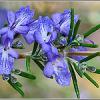So I thought I would share my experiences here so that others might benefit from them too. For those of you who do not know psoriasis is a chronic autoimmune disease that causes red patches on the skin.
My experience with the disease started when I was 19, one summer I was dating a really neurotic girl and the relationship caused me to experience a lot of stress, I was also a smoker and drank quite a lot. I was asked to get my chest waxed, so I went to a waxing studio and had a full chest and stomach waxing done. The next day my entire chest and stomach were covered in in red dots. Over the course of that week this dots turned into small patch and quickly spread all over my body including the palms of my hands and my feet. My mother also suffers from the condition (its genetic) and she provided me with her UV light which is used for treating it.
This had little effect and in the coming weeks this disease ruined my life. I tried everything to hide the spots on my hands, but the anxiety caused me to become a different person and I missed a scholarship opportunity as a result. My parents and I soon decided that something had to be done, we found a doctor in Munich, Germany working at a university clinic for psoriasis. He was well recognized in this field. After advising me that disease was inherited an incurable he recommended I undergo a complete tonsillectomy as well as full body UV light therapy. The light therapy help a little, but the tonsillectomy was a breakthrough. Literally all of my patches disappeared, most of my remaining light therapy treatments were cancelled because there was no longer any need.
Of course this is not the end of the story, 3 years later I began to smoke again, I quit after my operation but took it up again. Patches of psoriasis returned on my elbows, leg and the corner of my nose. I treated these with topical steroids and a UV light. The disease remained despite my efforts and when I moved from a warm climate into a cold one year ago, it began to spread once again.
The sight of the disease was to me unbearable so I decided to do something. I quit smoking again but this did not produce any noticeable effects. At that point I knew I needed to try something so let me outline what I came up with. My approach is to lower overall inflammation so that existing patches can be treated effectively.
Diet - I decided to eliminate as many inflammatory compounds from my food as possible. This is a great article on the role of diet in psoriasis, I would encourage anyone interested to get the full text version. I found the only way to do this was by adopting a vegan diet, as these have been shown to improve rheumatoid arthritis. The compound I wanted to avoid the most:
arachidonic acid:
Dietary sources of this inflammatory compound include chicken, beef and other meats as well as eggs.
This compound has also made researchers interested in high dihomogammalinolenic acid, which seems reduce its effects as well as high intake of eicosapentaenoic acid (EPA), which seems to have mixed results.
- http://onlinelibrary...05.06781.x/full
- http://europepmc.org...CG1uwaZitp9k.12
- http://www.pnas.org/...2/12/5130.short
- http://www.google.co...s/US20120302632
Should be avoided since Celiac disease could be related to psoriasis:
- http://0www.scienced...738081X10000519
- http://0www.scienced...002927003017179
- http://0informahealt...365520600633529
- By pursuing this diet I also avoid excessive methionine, which can help with life extension as well. Methionine
- http://archderm.jama...rticleid=528773
- http://jn.nutrition....134/4/825.short
- http://www.ncbi.nlm....pubmed/18789600
Epigenetic Agents
- Curcumin and resveratrol act synergistically to suppress immune response through CD28/CTLA-4 and CD80 co-stimulatory pathway, suppressing the activity of Th1 and Th2 cells and inhibiting production of proinflammatory cytokines (more in this study and more on why this matters)
- Algae Omega 3 EPA/DHA as mentioned earlier
- I will soon try gamma-linolenic acid - "increases the content of its elongase product, dihomo-gamma-linolenic acid (DGLA) ... DGLA can be converted by inflammatory cells to 15-(S)-hydroxy-8,11,13-eicosatrienoic acid and prostaglandin E1. This is noteworthy because these compounds possess both anti-inflammatory and antiproliferative properties."
- Vitamin D ( I take 5000 iu D3 every night)– oral vitamin D can improve psoriasis in some patients, this thought to be dependent on allele variations in vitamin D receptor genes.
- Vitamin b12 – necessary for vegans and psoriasis plaques have low levels of this vitamin
- Retinoic Acid – I recently started using tretinoin gel from AlldayChemist. I have seen a huge improvement in my skin. The side of my nose which was always red is now clearing and the skin is starting to look normal. Following my initial psoriasis outbreak I noticed that overall my skin had changed. It seemed a lot more prone to clogged pores and ingrown hairs. The tretinoin gel seems to be reversing that.
- Tazarotene (a class of retinoids) – I will start using this soon as it is an effective option, and may be more effective than tretinoin.
- Vitamin D and B12 creams can be used where retinoic acid is unsuitable and can be used with light therapy. They are both effective.
- I avoid topical steroids as I feel these are too harsh
Edit: Spelling, by request -mod
Edited by niner, 12 March 2014 - 03:13 PM.
























































